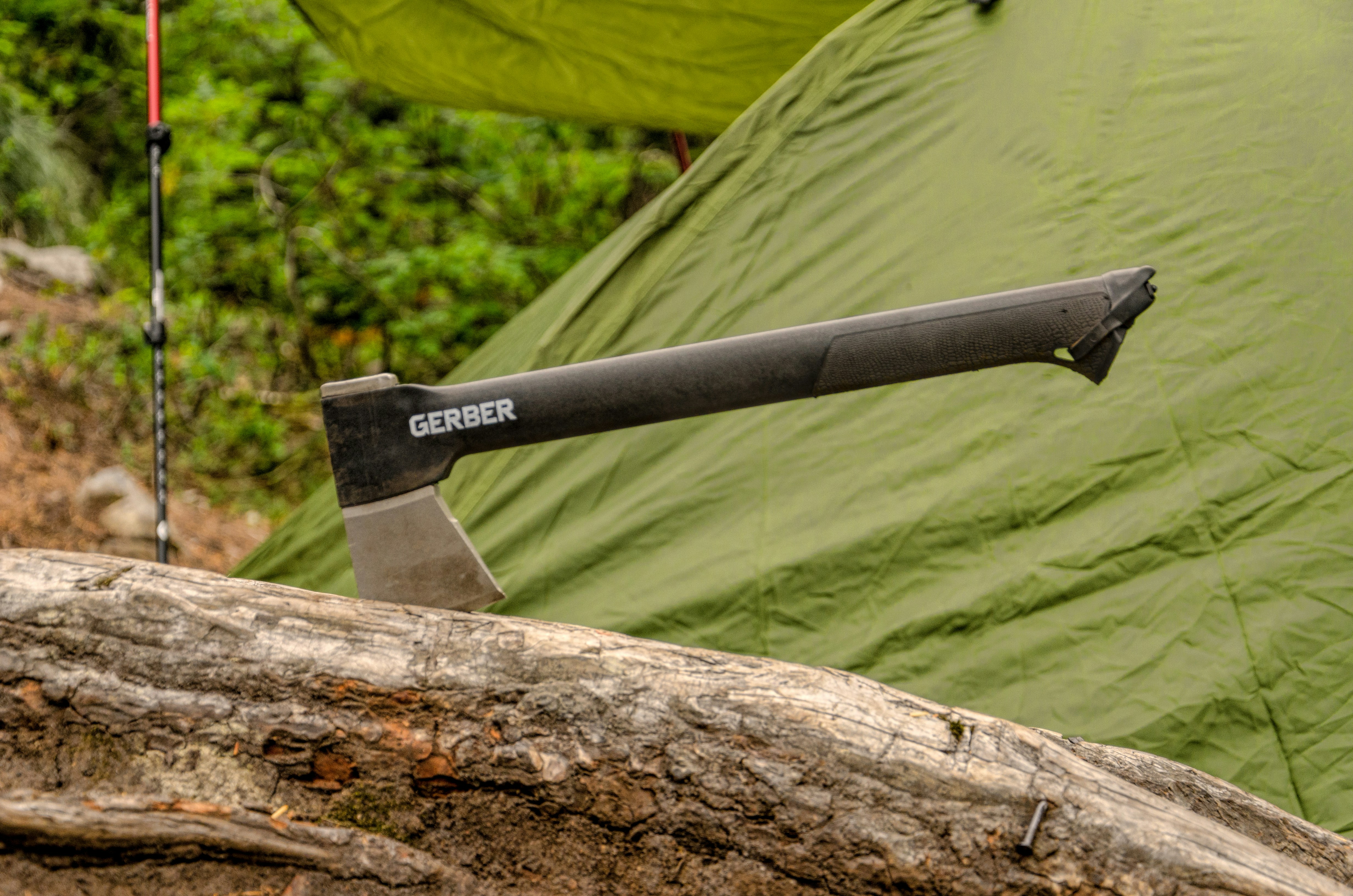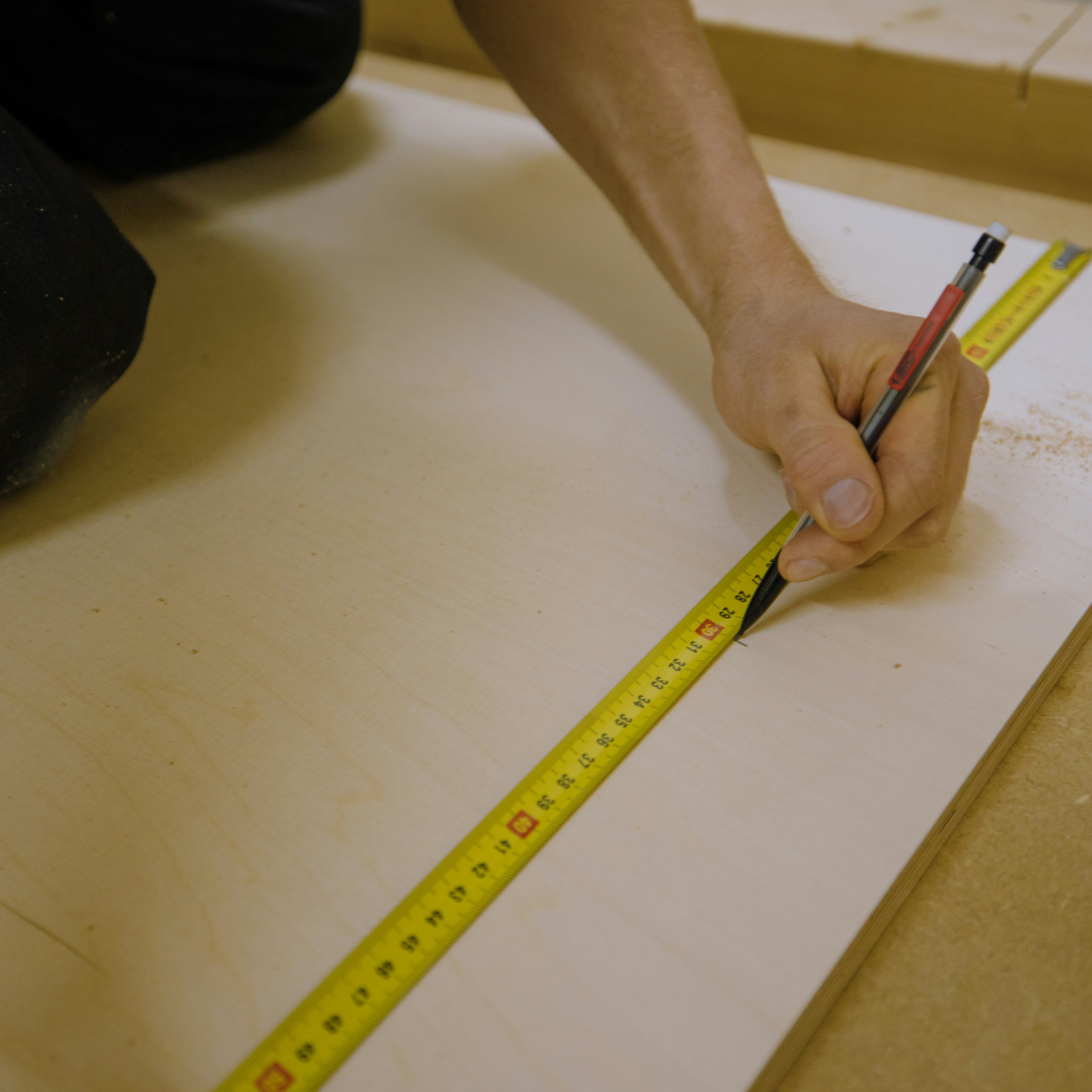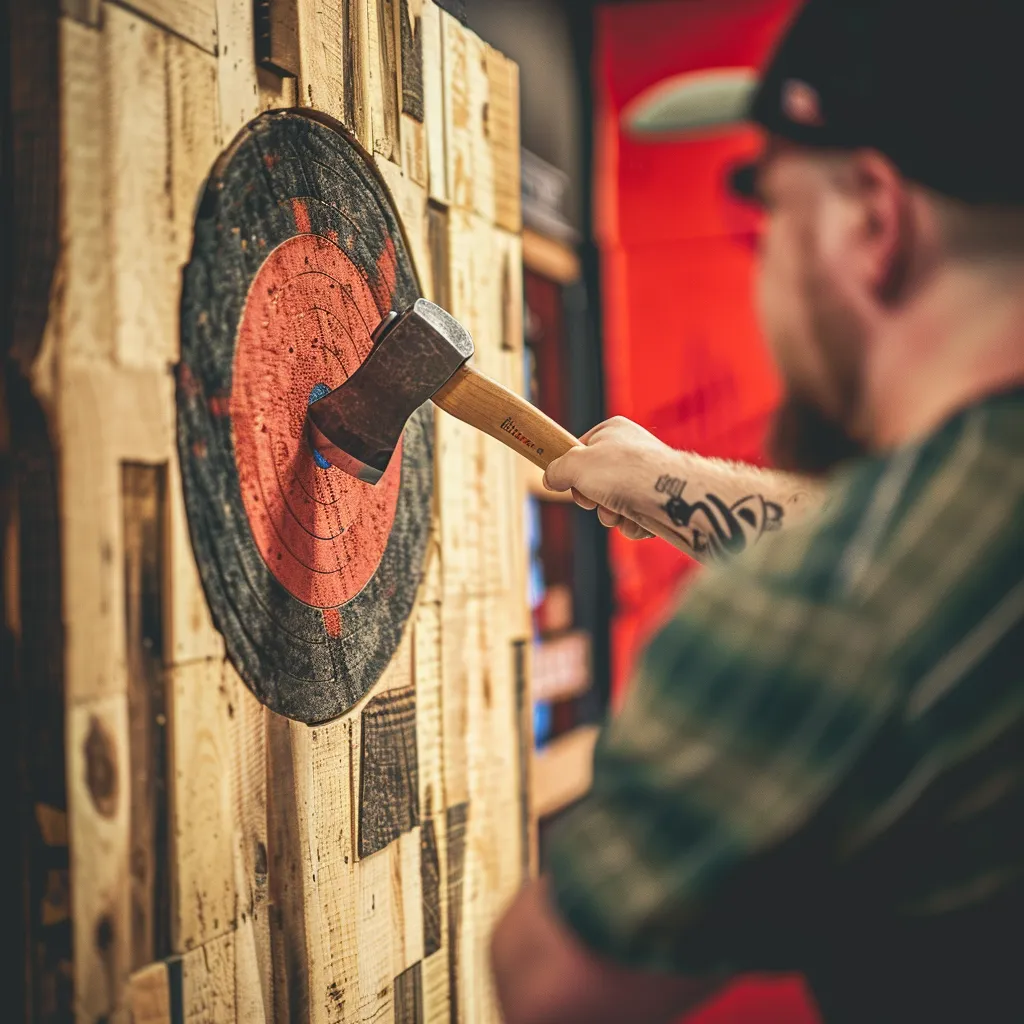Axe throwing can be a fun and rewarding activity, but choosing the right target is key for optimal performance. Many people overlook how target selection affects their accuracy and enjoyment. This post will discuss important factors like material and thickness, as well as proper setup and maintenance. By understanding these elements, readers will improve their skills and get more enjoyment from their sessions. If you’ve struggled to hit your mark or want to enhance your axe throwing experience, this guide will offer practical solutions, making every throw count.
Key Takeaways
- Different axe throwing targets vary in materials, sizes, and designs to suit various needs
- Target thickness and density significantly influence accuracy and overall performance during axe throwing
- Regular maintenance is essential to prolong the lifespan and performance of axe throwing targets
- Weather conditions can affect how well axes stick to wooden targets during practice sessions
- Engaging target designs can enhance the overall experience for both throwers and spectators
Understand the Components of Axe Throwing Targets

axe throwing targets come in various types, each designed for different goals. This section will outline the different targets available, including those made from pine and other materials. It will also discuss how the structure affects wear and tear and the importance of size and design variations. Understanding these factors helps in selecting the ideal target for better archery skills.
Identifying Different Types of Targets Available
Various types of axe-throwing targets are available, catering to different preferences and skill levels. One common choice is the wooden target, often made from pine, which provides a good balance of durability and ease of use. The World Axe Throwing League offers guidelines on target sizes, ensuring proper rotation and consistency for players aiming to improve their skills. Additionally, understanding the sale price of different targets can help enthusiasts choose one that fits their budget while still meeting performance needs.
Analyzing the Structure and Materials of Targets
The structure and materials of axe throwing targets significantly impact their performance and durability. Targets made from quality lumber, such as pine, often showcase distinct wood grain patterns that enhance their appeal and longevity. Players need to consider the length and thickness of these targets, as a solid construction can better withstand repeated throws. Understanding the league’s policy on target specifications helps make informed choices, and using a coupon for purchasing can provide extra value without compromising on quality.
Recognizing Target Size and Design Variations
When selecting axe throwing targets, size and design play critical roles in overall performance. Typical targets feature a bullseye at the center, which is essential for tournament play as it provides a clear goal for throwers. Price can vary significantly based on the design and materials used, so understanding what target features will best meet one’s skill level is crucial for making a smart investment.
Assess the Importance of Material Selection for Axe Throwing Targets

Material selection plays a crucial role in the performance of axe throwing targets. This section explores how different materials impact axe performance, focusing on various wood types known for their durability and longevity. It also reviews alternatives to traditional wood targets, providing insights into options that may enhance user experience and satisfaction.
Exploring the Impact of Material on Axe Performance
The choice of material for axe throwing targets greatly affects performance and durability. For instance, targets made from high-quality wood, like pine, can absorb impact better, allowing axes to penetrate effectively without causing excessive damage. Additionally, synthetic materials offer consistent performance and less wear over time, making them ideal for frequent use in competition settings. Understanding these material characteristics helps players select targets that suit their style and enhance their throwing experience.
Evaluating Wood Types for Durability and Longevity
Durability and longevity are key considerations when choosing wood types for axe-throwing targets. Hardwoods, such as oak and maple, are known for their strength and can endure frequent impacts, making them ideal for regular use. In contrast, softer woods like pine might be more accessible, but they can wear out quicker, affecting performance over time. Selecting the right type of wood enhances the experience and ensures that the target remains reliable for practice and competition.
Considering Alternatives to Traditional Wood Targets
While traditional wood targets, such as pine and maple, are popular choices for axe throwing, alternatives can also deliver great performance. Some enthusiasts opt for synthetic targets, which provide consistent durability and are less likely to degrade over time. These options often come with the added benefit of easier maintenance and can withstand regular, high-intensity use, making them suitable for both casual practice and competitive environments.
Examine the Role of Target Thickness and Density

Thickness and density are crucial factors in the selection of axe throwing targets. Understanding how thickness affects throwing dynamics helps players choose their skill level appropriately. Additionally, reviewing the impact of density on target performance reveals the importance of strong materials. Finally, selecting the right measurements ensures optimal use for both practice and competition.
Understanding How Thickness Affects Throwing Dynamics
Target thickness plays a significant role in axe throwing dynamics. Thicker targets often absorb impact more effectively, allowing axes to stick without bouncing back or causing damage. For those aiming to improve their accuracy, choosing thicker targets can provide a more forgiving surface, helping to build confidence and skill over time.
Reviewing Density and Its Impact on Target Performance
The density of axe throwing targets plays a vital role in overall performance. Denser materials can absorb impacts more effectively, allowing axes to stick better without bouncing or slipping. For players looking to improve their throw accuracy, selecting targets with appropriate density can create a more reliable surface for practice and competition.
Selecting the Right Measurements for Optimal Use
When selecting axe throwing targets, the right measurements are key for optimal use and performance. Thicker targets tend to absorb the force of the throw better, leading to more successful hits and a more enjoyable experience for players. Using standard dimensions recommended by leagues, such as targets around 24 to 40 inches in diameter, allows throwers to practice effectively while also preparing for competition settings:
- Choose thickness based on skill level and usage frequency.
- Standard sizes ensure consistency in practice and competition.
- Thicker targets provide a more forgiving surface for improving accuracy.
Explore the Influence of the Target Surface and Finish

Understanding the target surface and finish is vital for optimal axe throwing performance. Different surface types offer unique benefits, while various finishes can enhance durability and performance over time. Additionally, exploring texture variations allows players to select targets that suit their individual throwing styles, ensuring a more effective and enjoyable experience on the range.
Identifying Surface Types and Their Benefits
Different surface types of axe throwing targets offer distinct benefits that can enhance performance. For example, softer wood surfaces provide excellent grip, allowing axes to stick effectively, while harder surfaces can offer longer-lasting durability but may require more precision to achieve optimal sticking. Understanding these surface characteristics can help players choose targets that align with their skill levels and preferences, ultimately improving their overall axe throwing experience.
- Softer wood surfaces allow for better grip and sticking.
- Hard surfaces offer durability but require more accuracy.
- Target surface types should align with individual skill levels.
Analyzing Finishes for Enhanced Performance and Longevity
The type of finish applied to axe throwing targets significantly impacts their performance and longevity. Finishes can protect the wood from moisture and wear, which helps maintain the target’s integrity over time. For example, a good sealant can prevent splitting and enhance the target’s ability to absorb impact, ensuring that axes stick better and last longer during use.
Exploring Texture Variations for Different Throwing Styles
The texture of axe throwing targets can greatly affect throwing performance. For example, a rougher surface may provide better grip for the axe, helping it to stick upon impact, which can boost confidence for beginners. In contrast, a smoother texture might require more accuracy, making it a good choice for experienced throwers looking to refine their skills. Understanding these texture variations allows players to choose targets that align with their individual throwing styles, ultimately enhancing their overall experience.
Conclusion
Selecting the right axe throwing target enhances performance and skill development. Key factors like material, size, thickness, and surface texture directly influence how well axes stick and how enjoyable the throwing experience is. Regular maintenance and awareness of weather conditions also play a vital role in extending the life of targets. Players can significantly improve their accuracy and enjoyment in this exciting sport by considering these elements.

